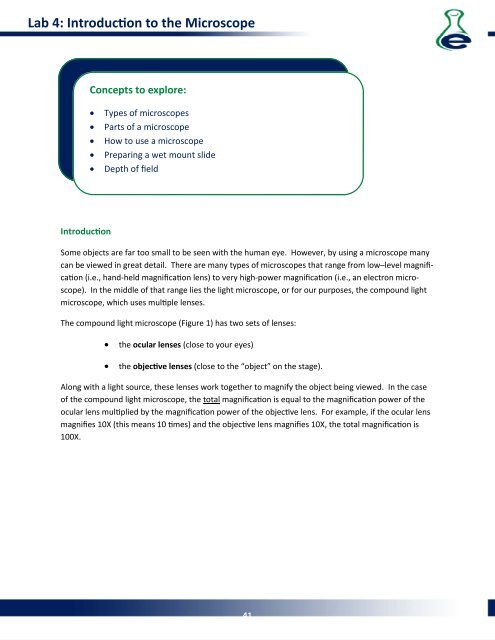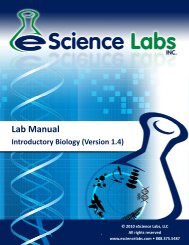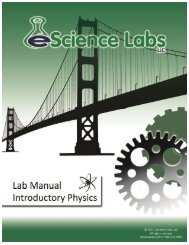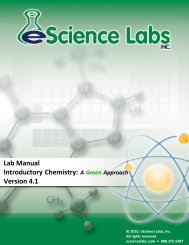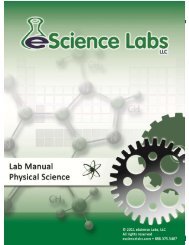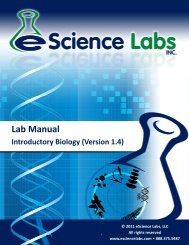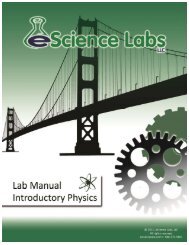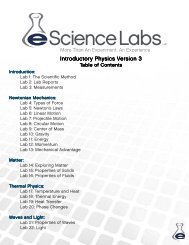Lab Manual - eScience Labs
Lab Manual - eScience Labs
Lab Manual - eScience Labs
Create successful ePaper yourself
Turn your PDF publications into a flip-book with our unique Google optimized e-Paper software.
<strong>Lab</strong> 4: Introducon to the Microscope<br />
Concepts to explore:<br />
• Types of microscopes<br />
• Parts of a microscope<br />
• How to use a microscope<br />
• Preparing a wet mount slide<br />
• Depth of field<br />
Introducon<br />
Some objects are far too small to be seen with the human eye. However, by using a microscope many<br />
can be viewed in great detail. There are many types of microscopes that range from low–level magnificaon<br />
(i.e., hand-held magnificaon lens) to very high-power magnificaon (i.e., an electron microscope).<br />
In the middle of that range lies the light microscope, or for our purposes, the compound light<br />
microscope, which uses mulple lenses.<br />
The compound light microscope (Figure 1) has two sets of lenses:<br />
• the ocular lenses (close to your eyes)<br />
• the objecve lenses (close to the “object” on the stage).<br />
Along with a light source, these lenses work together to magnify the object being viewed. In the case<br />
of the compound light microscope, the total magnificaon is equal to the magnificaon power of the<br />
ocular lens mulplied by the magnificaon power of the objecve lens. For example, if the ocular lens<br />
magnifies 10X (this means 10 mes) and the objecve lens magnifies 10X, the total magnificaon is<br />
100X.<br />
41


